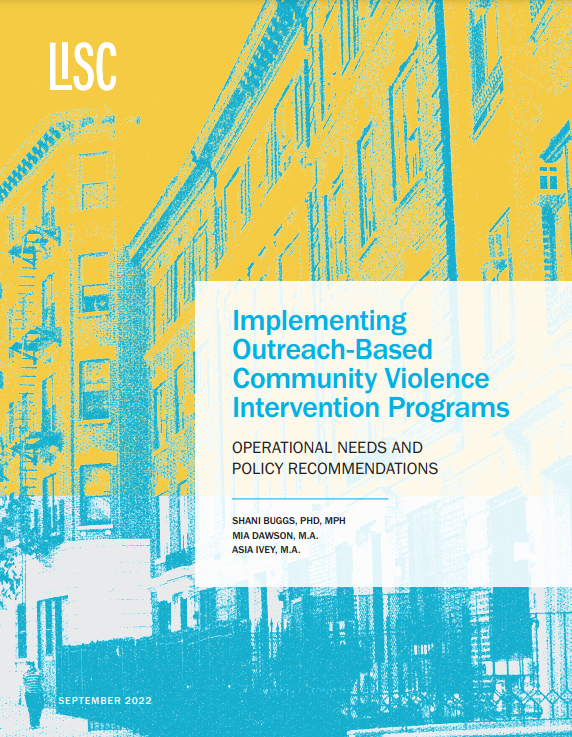Implementing Outreach-Based Community Violence Intervention Programs
For decades, grassroots groups around the country have been developing a method to reduce gun violence that relies not on heavy police presence but on intensive, empathetic outreach to community members most at risk of becoming involved in violence as both perpetrators and victims. Today this approach, known as community violence intervention (CVI), is the focus of unprecedented investment thanks to support from the Biden-Harris administration.
In this LISC research paper, based on candid interviews with 15 CVI leaders and analysis of existing literature, Dr. Shani Buggs, a national expert on CVI approaches social determinants of gun violence, and colleagues examine program strengths and challenges, and lay out detailed recommendations for supporting and enhancing the field.
Introduction
Community violence, or interpersonal violence between non-intimate partners that occurs in public places, is rooted in poverty and trauma, which, particularly in the United States, are undergirded by racial capitalism and white supremacy. Community-based outreach has been well documented as an integral strategy for reaching historically marginalized and disenfranchised populations in multiple fields. Community-based violence intervention (CVI) approaches that utilize outreach workers—professionals who identify and engage youth and adults who have a high risk of violence involvement—have the potential to quell violence in cities around the country. Indeed, the Biden-Harris Administration has not only highlighted CVI as an important element of community safety, but it has also committed federal dollars to CVI programs.
This amplification of CVI as a promising violence-reduction approach has also led to greater scrutiny of the various challenges these initiatives face in their implementation and operation, capacity, staffing needs, and the contexts for which they are employed. Without a more precise grasp of the elements that make these approaches effective and the challenges that must be mitigated for successful implementation and operation, outreach-based violence intervention programs, regardless of the intent or passion of the staff, may fail to achieve their goal of significantly reducing violence in their communities. However, if properly funded, supported, implemented, and evaluated, CVI has the potential to expand the paradigm of community safety without furthering over-reliance on law enforcement and the criminal legal system. This report seeks to fill gaps in our understanding of how best to implement, support, and sustain outreachbased CVI efforts by synthesizing existing literature and drawing on interviews with over a dozen CVI program leaders with deep expertise in the field.
